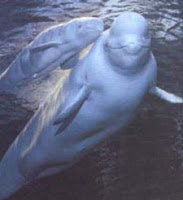
Today was my second day at the Glenwood Springs Salmon Hatchery. We are Tagging and clipping Baby Chinook as part of the Salmon Recovery Plan in the San Juans. I never would of thought that this would be one of the hardest jobs I have ever done. Admittedly, I had no idea what to expect, and yesterday my sheer exhaustion tested me to my limits.


We are clipping and tagging the 8 month old Baby Chinook and I am one of the clippers, which means standing in one place and clipping the Adipose Fins of the young Salmon. Although tedious and monotonous, I know in my heart that I am doing a good thing to help restore the extremely depleted Salmon Population here in Washington. Chinook, also known as King Salmon, are the most endangered of the Salmon Stocks here. Long Live the Kings is a non-profit that has been involved in helping with the recovery plan. I really hope in a a few years that these young salmon grow healthy and strong in order to feed the Endangered Orca population. The resident pods that spend a good part of the year in the San Juans, eat 98.5 % Chinook. They do not touch Coho or Sockeye, and they need around 300 pounds in order to sustain and be healthy. So, I really hope our efforts pay off, and these fish will help support a future healthy Orca population to rebound.
As mentioned the work is hard, and yesterday my body was so sore. I tried a stool, yet that didn't prove much better. I found that in the early hours I did better and actually gained speed today, however by the afternoon I was beat and slowing down. The goal is to tag 100,000 fish, then the Fish and Wildlife Fish Biologist can go back to Olympia, and we will only have to clip. Tagging is much harder, since you have to hold the fish by its tail, and carefully place its head under the little section to tag it. They put an anaesthetiser in the water, so the fish do not feel what you are doing to them. Anyway, this experience is all new to me, and I hope my body holds out. I am a walker, not a stander. This is a very dedicated project and I sincerely hope that all of our hard work pays off.
check out more on the Glenwood Springs Hatcheryhttp://www.lltk.org/pages/publications/newsletters/enews/enews_December2006.html












